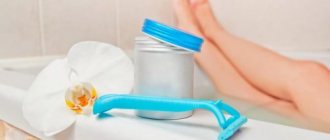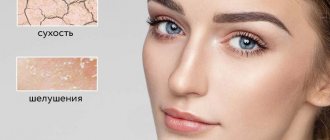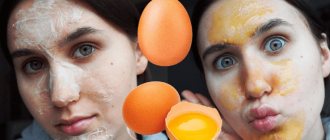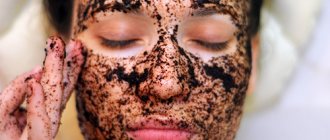The face cannot be hidden from the influence of the external environment, so it needs care, especially in summer. To avoid negative consequences, such as irritation, it is necessary to take into account the specifics of the epidermis. Caring for oily and problematic skin worries many women. Let's figure out how to implement it correctly and what tools will help with this.
Causes of very oily skin
Trouble may arise for the following reasons:
- Genetics, or heredity.
- Poor nutrition.
- Using inappropriate cosmetics, for example those containing alcohol, which dries out the epidermis.
- Hormone failure.
- Disturbances in metabolic processes.
- Diseases of internal organs.
- Mental illnesses and stress.
- Infections.
- Menstruation.
- Pregnancy and breastfeeding.
- Lack of control when taking contraceptives.
It should be noted that increased functionality of the sebaceous glands is usually characteristic up to 29 years of age. After 30 years, dryness or a combination type is observed.
Loan in 15 minutes at 0% to a bank card here
general characteristics
Oily skin is the result of overproduction of sebum from the sebaceous glands, which are located under the surface layer of the skin.
Sebum is an oily substance that protects and moisturizes the skin. However, excessive amounts of oil can lead to oily skin, clogged pores, and acne formation. Excessive sebum production can be caused by hormonal changes, genetics, stress, and climate conditions.
You can cope with oily skin and acne with the help of medicinal and folk herbal remedies.
How to tell if your skin is oily or dry
Before deciding what kind of care is needed for oily and problematic facial skin, decide on the type of epidermis.
Fat people tend to:
- Dense and rough epidermis.
- Enlarged pores.
- A shine that doesn't fade on its own.
- Blackheads and acne.
- Absence of small facial wrinkles.
Dry epidermis is characterized by:
- Pallor.
- Peeling.
- Itching.
- Presence of stains.
- Lack of elasticity.
- Allergy to the sun.
- Narrowed pores.
- Premature aging.
- Lack of shine.
- Tightness.
How to deal with oily skin
All processes in the body are interconnected; an excess of some hormones leads to an excess or suppression of others. Therefore, the first priority in treatment is to find the root cause. Without properly targeted treatment there will be no long-term results.
If oily skin type has been passed on from birth, then you should not abuse bad habits and not monitor your general health, so as not to aggravate the situation. Proper nutrition, moderate physical activity, healthy, full sleep, positive emotions and a limited amount of stress are the key to a long and happy life without serious diseases. If problems arise, then you shouldn’t solve them yourself; for this, there are experienced specialists who will save money, time and improve the rhythm of life.

Care for oily and problem skin at home
To always look amazing, follow the advice of cosmetologists:
- Eat more foods rich in vitamin B2. Eliminate or reduce your intake of salt, pepper, coffee, smoked meats, chocolate, fat and alcohol.
- Don't be nervous, because stress promotes shine. If necessary, you should take a sedative.
- Wash your pillowcase three times a week, as it collects bacteria and causes acne.
- If your hands are dirty, do not touch your face.
- Do not squeeze pimples to avoid infection.
- Wash off your makeup before going to bed. The pores must “breathe”.
- Do not use products containing alcohol as they cause dehydration. The lotions, creams and tonics used should be designed specifically for oily epidermis.
Daily care for oily skin
Experts recommend caring for oily and problem skin as follows:
- You should wash your face only with warm or cold water, since hot water provokes the activity of the sebaceous glands.
- Soap should not be used. It dries out only the superficial layers of the epidermis and at the same time causes irritation.
- To remove deep layers of dirt, use a washcloth or brush designed specifically for the face.
When performing procedures, do not rub your face or put pressure on it. Otherwise there is a risk of infection.
Folk remedies
You can prepare your own masks, creams and scrubs. Below are a few recipes:
- Mix 100 g of grated soap for children with 100 g of decoction of sage, chamomile and calendula. Place the mixture over low heat and melt, stirring continuously. When the mass has cooled a little, add a couple of drops of essential oils, 5 g of lemon juice, 5 g of almond oil, 20 g of ground oatmeal. Pour the mixture into the mold and wait until it hardens.
- Scrub made from lemon juice, sea salt (fine). The mass should look like a paste. Rub your face with it for two minutes once a day.
- Mint tonic. The mint must be left for 15 minutes, then add 10 g of lemon juice and 20 g of calendula decoction.
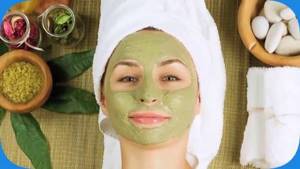
4 stages of skin care
Facial care includes 4 stages:
- Cleansing done in the morning before applying makeup and in the evening after removing makeup. Mousses and gels used for cleansing should not disturb the acidity of the epidermis. These products also have the function of preparing for moisturizing.
- Toning. It is carried out exclusively after cleaning. The procedure is aimed at removing residual cleaning substances, increasing tone and moisturizing. Choose tonics that do not contain alcohol. They tighten pores, do not cause allergies or irritation, and also normalize acidity.
- Caring for oily and problematic facial skin includes moisturizing. Use both night and day creams. The functions of a moisturizer are limited to protection from the sun's rays, from low temperatures in the winter months, from cold winds and the negative effects of cosmetics.
- Nutrition. The cream is applied not only to the face, but also to the neck. The procedure should be carried out two hours before going to bed. Remove any remaining substance that is not absorbed by blotting your face with a napkin.
When applying any creams, do it in movements from the center to the ears. The area around the eyes requires special attention.
How to eat right to reduce oily skin
MORE
- Balance.
Nutrition should be balanced in terms of proteins, fats, and carbohydrates. - Greenery.
Green leafy vegetables (cabbage, broccoli, spinach, lettuce, microgreens) are rich in vitamins, minerals, fiber and contain minimal calories. Vitamin C in their composition helps fight oxidizing agents. - Bananas.
This fruit contains potassium, phosphates, and vitamin E that are beneficial for the skin. It helps to shrink pores, thereby preventing dirt from entering the skin and the accumulation of fats. It contains a powerful dose of fiber necessary for cleansing. If you have weight problems, try the banana detox diet. - Ogurtsov.
Being almost water, this vegetable perfectly restores the water balance of the skin and has anti-inflammatory properties. - Croup
Legumes, corn, oats, wheat, brown rice contain a lot of fiber and substances beneficial to the skin. When choosing between refined and whole grains, we give preference to the latter.
LESS
- Fat.
If you don't want oily skin, don't eat fatty foods. Saturated fats (found in red meat, sausages, bacon) lead to skin inflammation, accompanied by excess sebum production. We switch to lean white meat. Don't fry in oil. We hope that products like mayonnaise and margarine do not need any comments. - Salty.
Salt leads to dehydration, in the process of combating which the amount of sebum increases. - Sahara.
This substance provokes increased release of the peptide hormone IGF-1, the side effect of which can be overproduction of sebum. We come up with alternative desserts and stop putting sugar in tea and coffee. - Alcohol.
Strong drinks lead to severe dehydration of the body. The skin of the face simultaneously experiences a lack of moisture and becomes covered with an oily sheen, the pores expand. - White.
White bread, pasta, white rice, which contain a lot of refined carbohydrates, increase the production of the same IGF-1, which provokes the processing of sebum. Switch to whole wheat flour. - Spicy.
Foods with “pepper” can lead to gastrointestinal upset and increase the production of the male hormone testosterone, which, in turn, activates the sebaceous glands. - Smoked.
Food prepared by smoking causes changes in metabolism, which can lead to skin problems. - Caffeine
(coffee, tea, cocoa, chocolate). Oh, that caffeine trickster! Instead of the promised cheerfulness, there is stress. If you didn’t already know: caffeine provokes the production of the stress hormone cortisol, which, in turn, increases the activity of the sebaceous glands and causes acne.
How to properly care for oily skin: dispelling myths
How many mistakes do women make when trying to tame their oily skin, other than trying to melt the fat over the fire! We have collected the most common misconceptions regarding caring for oily skin. Don't repeat stupid things after others!

And remember the main goal of caring for oily skin is to control shine and reduce inflammation. To do this, you need to pacify the sebaceous glands and regularly get rid of the keratinized epidermis. The main thing is to do it competently.
Professional care for oily skin

In-salon care includes procedures such as:
- Using fruit acids for exfoliation. Held once every seven days. You must visit a specialist at least five times. You will notice how your pores become smaller and your skin becomes lighter and tighter.
- Moisturizing, soothing and anti-inflammatory manipulations that heal and balance.
Treatment of acne on oily skin with Clindovit® gel
Gel Klindovit® for acne has an antibacterial effect. It contains clindamycin phosphate, which is an antibiotic with antimicrobial activity against a large number of strains of P. acne. It reduces the rate of protein synthesis in bacterial cells and reduces the amount of free fatty acids on the surface of the epidermis. 6, 18
Klindovit® acne gel must be taken 2-3 times a day 6. Its base also includes components that moisturize the skin (emollient) and accelerate regeneration processes (allantoin). 6
The course of treatment for oily facial skin with acne with Clindovit® gel is about 6-8 weeks. If necessary, therapy can last up to 6 months. 6
Caring for problem skin of a teenager
Cosmetologists advise paying special attention to skin care in adolescence, regardless of the presence of problems and the gender of the child. This period begins at the age of 12 and lasts until the age of 17, characterized by the appearance of rashes on the face. If rashes are ignored, they can lead to blemishes, scars, and infections.
The defects are explained by hormonal changes. The sebaceous glands function more actively, the epidermis thickens. Inflammation and acne are observed. To stop the process and avoid the development of complexes in a child, it is enough to provide proper care.
Manipulations should be aimed at solving the following problems:
- Dull complexion, wide pores.
- Gland cysts in the form of white nodules.
- Increased fat formation.
- Cysts formed as a result of blockage of the mouth of the hair follicle by horny masses.

Caring for oily and problematic facial skin becomes more complicated in the presence of factors such as:
- Nutritional imbalance.
- Weak immune system.
- Constant exposure to sun and water.
- Gastrointestinal diseases.
- Stress.
- Too much cosmetics or inappropriate products.
- Medicines.
To remove defects, the following are used:
- Lotions for deep cleansing.
- Gels for washing.
- Milk for moisturizing.
- Creams with a calming effect.
- Drying gels.
- Matting mixtures.
- Drugs aimed at combating acne.
All products must be developed specifically for the epidermis, which is characterized by high fat content.
Now you know what procedures include caring for oily and problematic skin, what beauty care products exist and how to determine your own skin type. Take care of yourself, because how you look depends only on you.
Dry skin - care features
Due to the weak secretion of sebum, pimples and blackheads almost never appear on it. If they do occur, it is usually in the form of isolated rashes. Dry skin has very small pores that are practically invisible, so it does not have an oily sheen.
Its owners, as a rule, need a large amount of moisturizers. After washing, especially with soap, dry skin “tightens.” She is very sensitive and easily irritated by aggressive products or procedures.
Dry skin is susceptible to various dermatological diseases. From frost and heat it becomes inflamed and peels.
Ideal products for dry skin:
- Gentle cleansers that combine cleansing and moisturizing. These can be thicker, creamier formulations or light foaming products.
- Moisturizers that restore and nourish at the same time.
- Non-retinoid anti-aging products containing growth factors and peptides to prevent aging.
Recommended treatments for dry skin:
- Mesotherapy – injections of vitamins and nutritional components. Allows you to fight dryness and prevent early wilting.
- Plasmolifting is the introduction of the patient’s own plasma taken from his blood. It has a regenerating effect and inhibits age-related processes. The procedure makes the skin smoother and healthier.
- Face masks , including water-based ones, have a rejuvenating and moisturizing effect.
- Dysport and Botox will help in the fight against wrinkles. For dry skin, botulinum toxin-based treatments should be started as early as possible to prevent the aging process.
- Restylane, Juvederm and Sculptor fillers will remove wrinkles. With this type of skin, their use should begin at the first signs of aging.
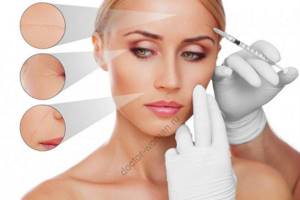
Proper care will eliminate dry skin and slow down the aging process.

